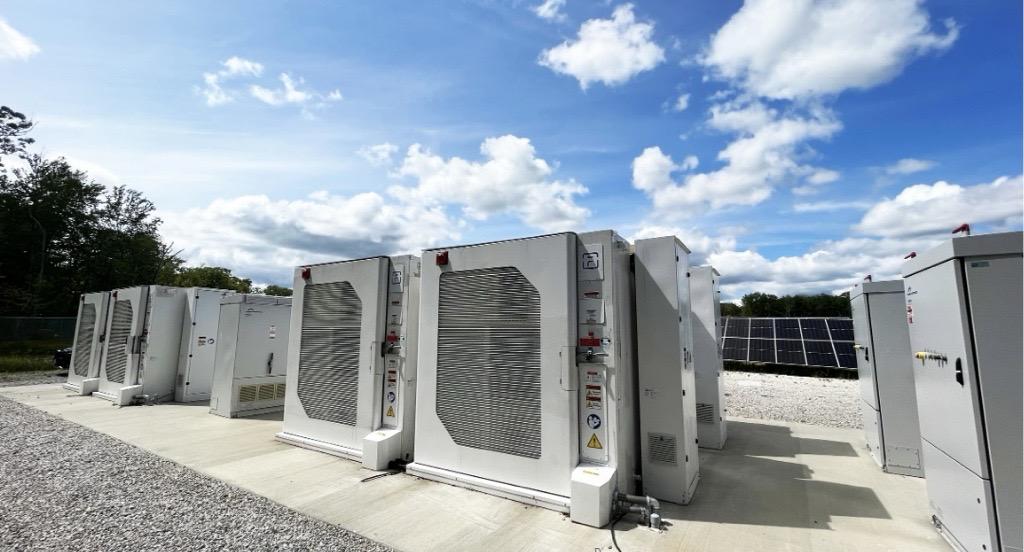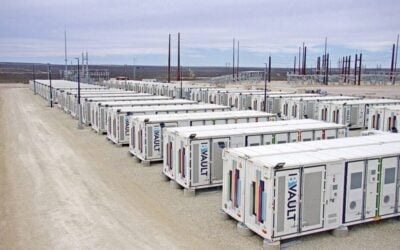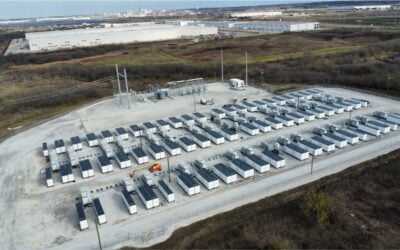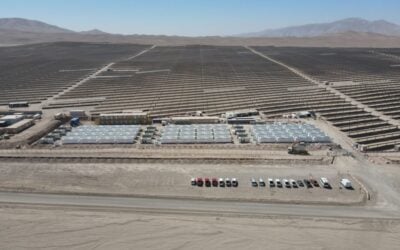
The US battery storage market is at risk of seeing deployments fall by 29% in 2026 due to ongoing policy uncertainty, according to Wood Mackenzie.
The market research firm published the newest edition of its quarterly US Energy Storage Monitor report last week (25 June).
Covering activity in the first three months of this year, Wood Mackenzie analysts found that although deployments across the three market segments it tracks hit a Q1 record, utility-scale, commercial and industrial (C&I) and distributed energy storage all risk severe contraction if detrimental policy changes are enacted.
The Q2 edition of the report emerged a couple of days before the passing of Donald Trump’s ‘One, Big, Beautiful Bill Act’ budget reconciliation act for final debate in the Senate.
Try Premium for just $1
- Full premium access for the first month at only $1
- Converts to an annual rate after 30 days unless cancelled
- Cancel anytime during the trial period
Premium Benefits
- Expert industry analysis and interviews
- Digital access to PV Tech Power journal
- Exclusive event discounts
Or get the full Premium subscription right away
Or continue reading this article for free
A marathon ‘vote-a-rama’ was ongoing at the time of writing as Republican Senators sought to push the bill through ahead of the president’s desired 4 July deadline. The proposal being debated included premature ends to residential clean energy, solar PV and wind tax credits, limitations on material assistance from foreign entities of concern (FEOC) which could include retroactively applied taxes and cutting of research funding into almost all environmental science.
It also comes amid the uncertainty of the import tariff scenario, with tariffs on Chinese goods—for which the US battery energy storage system (BESS) market is heavily dependent—paused at 54% for applicable battery products.
The pause is due to end 12 August, but the future outcome has yet to be negotiated between the US and China. Non-battery specific tariffs could also affect some materials and equipment used in the industry from countries beside China, too.
Q1 saw record 2GW across all segments
The bittersweet lead takeaway from the Q2 2025 US Energy Storage Monitor is that the industry deployed 2GW of energy storage across all segments in Q1 this year, with 1,558MW/4,078MWh of utility-scale or grid-scale additions representing a 57% increase on the same period of 2024.
That follows full-year deployment records also being broken in 2024. Last year marked the first time total installations exceeded the 10GW threshold, totalling 12,314MW in output and 37,143MWh storage capacity. Those statistics represented around a one-third increase from 2023 figures, according to Wood Mackenzie.
The outlook for 2025 as a whole looks relatively robust. While tariffs will affect utility-scale numbers significantly downward in the first half of this year, the research firm said the urgent need for load growth across US electricity markets would drive a rebound.
Wood Mackenzie has forecasted that records will once again be broken, with 15.2GW/48.7GWh expected across all segments.
While California’s CAISO grid and Texas’ ERCOT have consistently ranked highest for utility-scale additions over the past few years, with CAISO now close to 17GW and ERCOT above the 10GW mark, Wood Mackenzie said there had been notable growth in other markets too in Q1 2025.
In a joint press release with the trade association American Clean Power Association (ACP), which co-publishes the quarterly report, Indiana was highlighted as an example of a relatively new state driving up its storage market.
Indiana is partly in the PJM Interconnection transmission area and partly in MISO. It quadrupled its storage capacity during the first quarter, adding 256MW. In fact, in Q1, it ranked second after California (457MW), just ahead of joint-third Texas and Arizona by a megawatt (each with 255MW of new capacity).
The state also now has the fifth-largest queue of energy storage projects awaiting grid interconnection, with more than 10GW.
Tax credit changes could severely limit growth
“The Q1 2025 results demonstrate the demand for energy storage in the US to serve a grid with both growing renewables and growing load,” Wood Mackenzie global head of energy storage Allison Weis said.
“However, the industry stands at a crossroads, with potential policy changes threatening to disrupt this momentum.”
Wood Mackenzie’s report was compiled after the budget reconciliation bill draft passed the House of Representatives—at which point investment tax credits (ITCs) for storage looked due to be cut several years early—but before the bill’s two latest proposed forms emerged for Senators to debate and potentially amend this week.
The latest 940-page proposal appeared to retain tax credits for energy storage while ending them for solar PV and wind, but at the same time, the FEOC provisions contained could be so restrictive that many developers and investors would find them prohibitive from embarking on new projects or could even find themselves with hefty tax bills applied after start of construction.
BloombergNEF global energy storage market analyst Isshu Kikuma, who spoke with Energy-Storage.news last month, also said that removal of the ITC could cause energy storage deployments to “plummet”.
Wood Mackenzie warned that the utility-scale segment could see a 29% contraction in 2026 due to the current policy uncertainty, as fluctuating tariff rates limit battery procurement from China. However, while the industry could rebound from tariff challenges, a repeal of the ITC could mean a 16GW decrease in expected grid-scale additions over the next five years.
However, the five-year outlook for residential and C&I storage looks much worse. C&I, in which Wood Mackenzie also counts community-scale storage, could see forecast installations fall by 42%, and distributed storage, including residential, could see a potential 46% drop from the modelled base case over that time.
“It’s crucial that policymakers understand the importance of stable, supportive policies for the continued expansion of energy storage,” Weis said.
The energy storage market is helping to support the US grid as it comes under strain from “surging electricity demand,” ACP senior VP of markets and policy analysis John Hensley said.
“The energy storage market is responding to help keep the lights on and support this unprecedented growth in an affordable and reliable way. Policy uncertainty is now one of the most significant risks that remains on the horizon as we tackle a balanced approach to allowing our economy to expand while maintaining the energy reliability that Americans deserve.”
An ACP report, which tallied grid-scale additions across solar PV, wind and energy storage technologies in the US across Q1 2025 and came out last month, noted that eight of the top ten states for new clean power additions voted Republican in the 2024 election.





